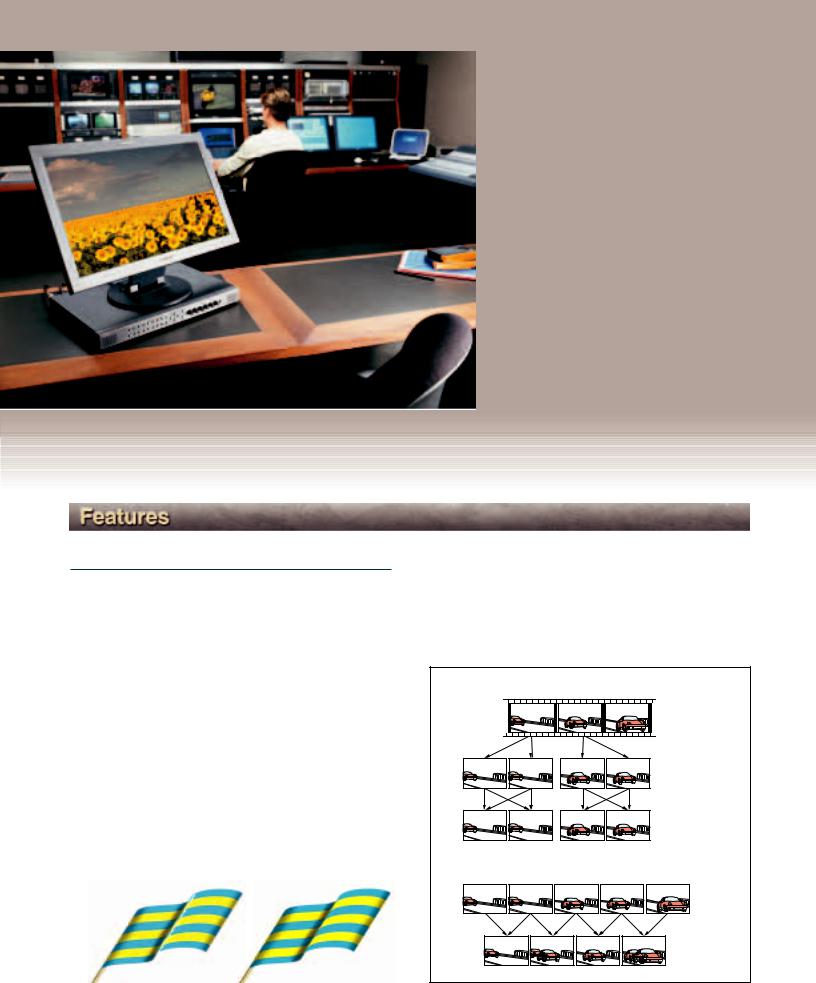Sony LMD-230WS, LMD-170WS User Manual

Professional Video LCD Monitors
LMD-230WS LMD-170WS
(Shown with optional table stand)

Sony unveils its impressive new lineup of elegant twopiece Professional Video LCD monitors—the LUMA™ Series. Choose from the LMD-230WS or LMD-170WS LCD monitors, both of which are driven by a separate, powerful signal-processing Multiformat Engine. Their innovative designs offer the perfect solution for a wide variety of professional applications. Thin, lightweight, and simple, the two LCD monitors provide outstanding installation flexibility. And when integrated with the optional monitor stand, it is easy to adjust both height and tilt to achieve the optimum viewing angle.
Based on the latest developments in image processing, such as the new “X Algorithm” technology, these monitors provide outstanding natural images with a high level of brightness and contrast. They accept a wide variety of signal formats such as analog RGB and HD, and computer signals from VGA to SXGA.
Building on Sony’s successful PVM series, these all new 23–inch and 17.1-inch (viewable area, measured diagonally) LCD monitors are designed to meet a wide range of picture-monitoring demands in professional applications such as broadcast stations,
OB vehicles, post-production studios, and digital photo
studios.
■ Outstanding Picture Performance
Excellent Brightness and Contrast
The LMD-230WS and LMD-170WS monitors utilize WXGA LCD panels to provide high-brightness and high-contrast images with natural color reproduction. Incorporating a color filter with broad color gamut, these monitors display outstanding natural images.
Interpolation Technology – X Algorithm
This new “X Algorithm” technology delivers impressive improvements in picture quality. Jaggy noise, which often occurs on the edge of moving objects in pictures, is effectively removed. Traditionally, standard-definition video signals are converted from interlace signals into progressive signals through the formation of a frame picture with two field pictures. This often results in jagged shape noise along the oblique direction of fast-moving objects. To overcome this, the “X Algorithm” technology detects motion and, through comparison of the oblique pixels above, below, and adjacent to the moving part, inserts a new line. This reproduces images smoothly, such as a fluttering flag with moving oblique lines. X Algorithm is especially effective for low-resolution images.
Conventional technology |
X Algorithm |
2-2 and 2-3 Pull-Down Functions
When displaying film-originated sources, the 2-2 and 2-3 Pull-Down functions help to reproduce natural and detailed pictures. If NTSC signals that have been converted from film are detected, each frame of the original film is accurately reproduced by the 2-3 Pull-Down function. Any other video signals, including PAL signals, are converted by the 2-2 Pull-Down function with natural reproduction.
2-2 Pull Down
A |
B |
C |
|
|
Film |
A |
A |
B |
|
B |
|
|
|
|
interlace |
A |
A |
B |
|
B |
|
|
|
|
progressive |
Nomal I/P conversion |
|
|
|
|
A |
A |
B |
B |
C |
|
|
|
|
interlace |
A |
A+B |
B |
|
B+C |
|
|
|
|
progressive |
(image picture)
